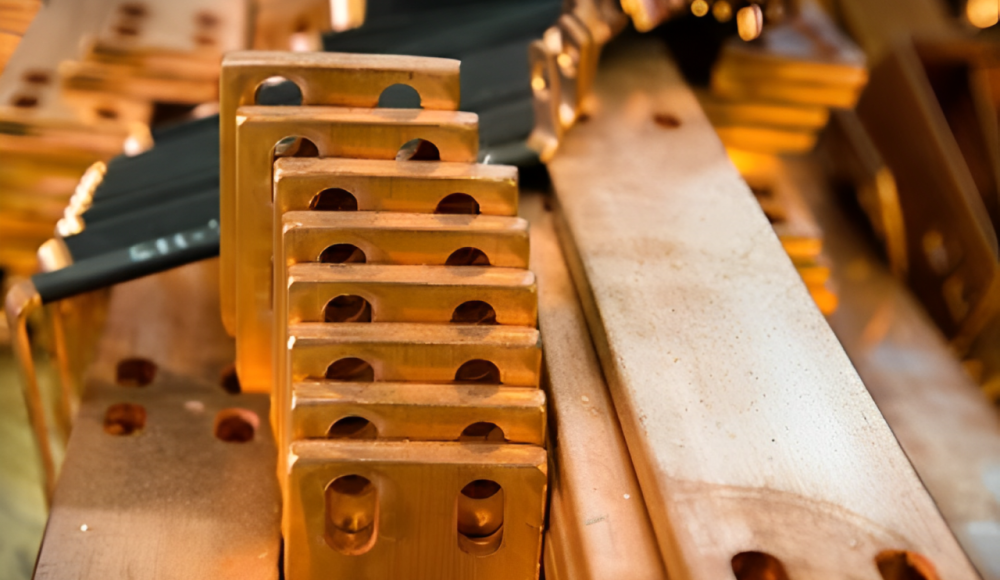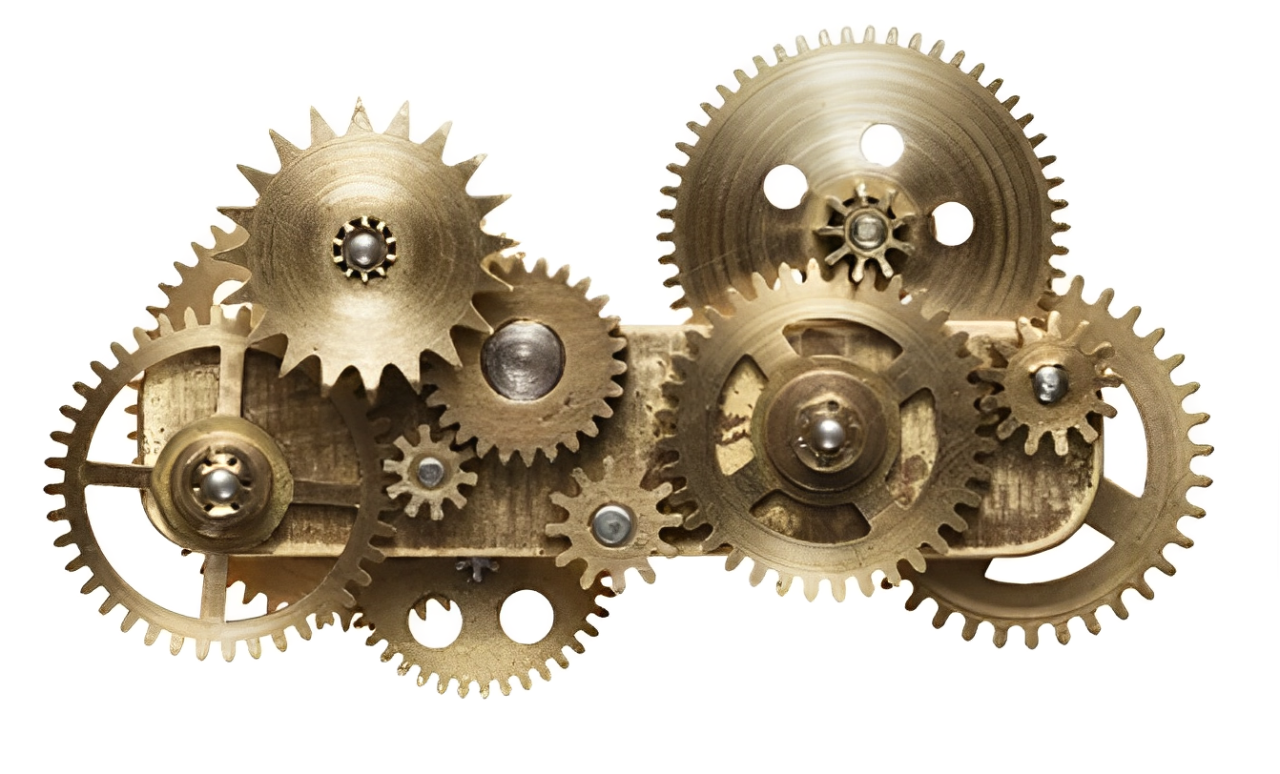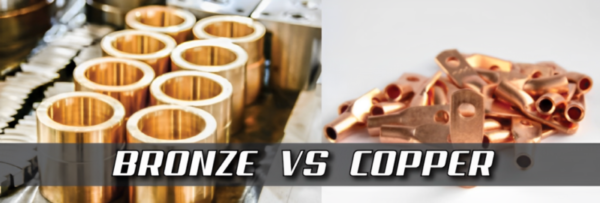Sia il rame che il bronzo hanno un'influenza sul mondo in molti modi. Sono due metalli antichi e importanti che hanno influenzato il mondo. Rame, la prima scoperta dei metalli conosciuti, e il bronzo, una lega di rame, ne cambiò la forma, contenuto, e utilizzo degli strumenti, arte, e architettura. Tuttavia, comportano differenze utili nelle proprietà, natura dell'uso, e costo. Questo articolo si concentra sulla natura di tali metalli e sui vantaggi e gli svantaggi di entrambi i metalli. oltre a questo, discuteremo le situazioni in cui vorresti applicarli.
Cos'è il rame?
Rame è un morbido, metallo rosso-arancio che beneficia di un'elevata conduttività elettrica e di un'elevata duttilità. È un elemento comune nel magma/crosta oceanica della Terra e uno dei primi metalli ad essere estratto e utilizzato dalle prime società da 8000 A.C.
Proprietà chiave del rame
Ecco alcune delle caratteristiche principali del rame metallico:
- Colore: Marrone-rossastro mediamente denso con lucentezza brillante.
- Densità:~8,96 g/cm³
- Punto di fusione:1,085°C (1,984°F)
- Conduttività: Alto livello di conduttività elettrica e termica.
- Malleabilità & Duttilità: Altamente malleabile e duttile.
- Resistenza alla corrosione: Cresce uno strato di colore verde, chiamato carbonato di rame che impedisce l'ulteriore ossidazione.
Cos'è il Bronzo?
Bronzo È, Infatti, composto principalmente da rame e stagno. Contiene una piccola percentuale di alluminio, nichel, e zinco. Di solito applicato nell'età del bronzo intorno 3000 A.C, ha mostrato una nuova tecnologia migliorata per l'umanità.
Proprietà chiave del bronzo
COSÌ, di seguito le caratteristiche salienti del metallo bronzo:
- Colore: Marrone dorato brillante a volte con una sfumatura rossastra.
- Densità:~8,8 g/cm³ (dipende dalla composizione).
- Punto di fusione: Meno del rame, 950 gradi Celsius (1,742 gradi Fahrenheit) Sopra.
- Forza & Durezza: È leggermente più duro e resistente del rame puro.
- Resistenza alla corrosione: È buono nelle applicazioni marine.
- Resistenza all'attrito: Basso coefficiente di attrito.
Bronzo Vs Rame: il confronto definitivo
COSÌ, ecco il confronto dettagliato tra i metalli bronzo e rame:
1. Composizione
- Rame: Il rame è un elemento chimico che sta per Cu ed è una sostanza semplice. Grazie alla sua elevata purezza, possiede alcune caratteristiche favorevoli come elevata conduttività elettrica e natura duttile. COSÌ, è abbastanza adatto per usi elettrici e ornamentali. Ovviamente, il rame puro viene utilizzato anche negli utensili per fumare, come il Narghilè egiziano realizzato da Vistahookah, che è fatto di rame puro.
- Bronzo: Il bronzo è un metallo costituito da rame e stagno. Il bronzo moderno può contenere altri metalli, i.e. alluminio o zinco. La sua operazione di lega ne migliora la tenacità e la resistenza all'usura rendendolo adatto per applicazioni gravose.
2. Forza e durata
- Rame: Il rame è relativamente morbido e malleabile, particolarmente facile da modellare, ma non è adatto per applicazioni ad alta resistenza. È giusto per esporre ornamenti, o qualsiasi luogo che richieda flessibilità.
- Bronzo: È più forte del rame ed esercita molta più pressione. Ciò lo rende ideale per le parti meccaniche, e strumenti per applicazioni marine.
3. Resistenza alla corrosione
- Rame: Il rame forma un rivestimento verde o ruggine se esposto all'acqua e all'aria; questo strato protegge il metallo dalla continua ossidazione. Ma è sollecitato a condizioni acide. COSÌ, può essere facilmente danneggiato.
- Bronzo: Il bronzo ha qualità di corrosione migliori rispetto al rame grazie allo stagno. È resistente alla corrosione in acqua marina e di mare e adatto per l'uso esterno e subacqueo. oltre a questo, ha numerose applicazioni in aree in cui è probabile che si verifichino elevate vibrazioni.
4. Conduttività
- Rame: Il rame è noto per essere uno dei migliori conduttori di elettricità e calore. Perciò, è utilizzato in prodotti larghi, i.e. cablaggio elettrico, elettronica, e sistemi termici. In termini di conduttività, si confronta molto favorevolmente con altri metalli.
- Bronzo: Conduce elettricità e calore; successivamente, la sua conduttività è inferiore a quella del rame. Ciò ne limita l'impiego negli impianti elettrici, anche se non lo fa minimamente nelle applicazioni strutturali/meccaniche.
5. Lavorabilità
- Rame: È anche molto plastico, COSÌ, può essere facilmente piegato, sagomato, e saldato. Questa proprietà lo rende adatto a progetti e componenti che richiedono flessibilità in questa proprietà.
- Bronzo: Sebbene strettamente correlati nelle proprietà, il bronzo è più difficile da manipolare del rame a causa della sua maggiore durezza. Se è così, è ancora di plastica e può essere utilizzato per modellare parti resistenti, i.e. ingranaggio o scultura.
6. Aspetto
- Rame: Il rame ha una finitura lucida metallica rosso-arancio, ma arrugginisce e acquisisce una tonalità verde. Questo è un percorso naturale che è accettabile per una serie di applicazioni nella maggior parte delle regioni del mondo perché così facendo, aggiunge fascino estetico.
- Bronzo: Il bronzo contiene elementi dorati o marroni ed è più facile da mantenere come decorazione o scultura a lungo termine rispetto al rame. Non è incline ad ossidarsi come il rame.
7. Costo
- Rame: È più facilmente reperibile dello stagno e relativamente più facilmente lavorabile del bronzo. Di conseguenza, il costo del rame è relativamente inferiore a quello del bronzo. Questo è il motivo per cui l’utilizzo di questa nozione è piuttosto ampio a causa del suo costo relativamente basso.
- Bronzo: COSÌ, lo stagno e gli altri metalli utilizzati nella fabbricazione del bronzo sono costosi rispetto alla produzione del rame puro. Il suo fattore prezzo indica un livello di durabilità più elevato insieme all'uso esclusivo da parte del cliente.
La tabella seguente ci fornisce un confronto dettagliato tra rame e bronzo:
| Aspetto | Rame | Bronzo |
| Composizione | Elemento puro (Cu), altamente conduttivo e duttile. | La lega di rame e stagno è più dura e resistente all'usura. |
| Forza & Durabilità | Morbido e flessibile, ideale per ornamenti. | Più forte e più durevole, adatto per attrezzi e usi marini. |
| Resistenza alla corrosione | Forma una patina protettiva verde, vulnerabile agli acidi. | Eccellente resistenza alla corrosione, ideale per uso marino ed esterno. |
| Conduttività | Conduttività elettrica e termica superiore. | Minore conduttività, utilizzato in applicazioni strutturali/meccaniche. |
| Lavorabilità | Facile da modellare, curva, e saldare. | È più difficile da lavorare ma è adatto per componenti durevoli come ingranaggi e sculture. |
| Aspetto | Il rosso-arancio si ossida fino a formare una patina verde. | Il marrone dorato mantiene meglio la sua finitura ed è meno incline a ossidarsi. |
| Costo | Più conveniente, ampiamente utilizzato. | Il costo più elevato riflette la durata e l’uso specializzato. |
Applicazioni del bronzo
Di seguito sono riportati i numerosi usi del metallo bronzo:
- Sculture & Artefatti: Per la sua bellezza e facilità di lancio.
- Attrezzatura marina: Ha un carattere perfetto se esposto alla corrosione dell'acqua salata.
- Parti meccaniche: Cespugli, Cuscinetti, Ingranaggio.
- Strumenti musicali: Gong d'acqua e tam-tam per il sostegno, piatti ride e rintocchi per il sostegno.
Applicazioni del rame
Di seguito sono riportati i numerosi usi del rame metallico:
- Cablaggio elettrico: Poiché è un conduttore migliore rispetto al rame e all'alluminio in termini di fluttuazione del carico e caduta di tensione.
- Impianto idraulico: Resistente alla corrosione e alla ruggine, che è perfetto per i tubi.
- Arte & Gioielleria: A causa della lucentezza e dei colori ad esso associati, può essere utilizzato per prodotti decorativi.
- Usi industriali: Nei motori, generatori, applicazioni di scambiatori di calore.
Come scegliere tra rame e bronzo?
Ecco alcuni dei fattori che dobbiamo considerare nella scelta tra rame e bronzo;
- Applicazioni elettriche: Per la conduttività selezionare il rame.
- Uso marino o esterno: Il bronzo è preferito per ridurre al minimo la corrosione.
- Appello estetico: Entrambi i metalli sono splendidi; quale utilizzare dipende dalle specificità dell'applicazione per quanto riguarda il colore e l'ossidazione.
- Requisiti di forza: Le parti meccaniche in cui la resistenza è importante dovrebbero essere realizzate in bronzo.
- Bilancio: Il rame è considerato il materiale più economico.
Sostenibilità e Riciclo
Nonostante le differenze nelle loro proprietà, rame e bronzo sono due materiali facili da riciclare. Il riutilizzo del rame non ne compromette la qualità, bronzo, lo stesso del rame può essere rilegato. Ciò garantisce che entrambi i metalli siano prodotti rispettosi dell’ambiente in vari settori.
Innovazioni moderne
Bronzo e rame hanno nuove applicazioni nella nanotecnologia, sistemi di energia rinnovabile, e rivestimenti antimicrobici. Il rame è efficace nel ridurre al minimo la presenza microbica sulle superfici sanitarie.
Conclusione
Insomma, il rame e il bronzo sono preferiti da molti per le loro caratteristiche speciali che si adattano a diversi usi. Il rame è migliore per applicazioni elettriche e ornamentali e il bronzo. oltre a questo, ha numerose applicazioni grazie alla sua tenacità, e durata, sono esposti a condizioni di umidità. Conoscenza di alcune differenze, sia che si tratti di industriale, artistico, o pratico. Ti consentirà di fare le scelte e le decisioni giuste. Prendi la decisione giusta di utilizzare questi due metalli eterni.
Domande frequenti
- Il bronzo è più forte del rame?
SÌ, il bronzo è leggermente più duro e più durevole del rame puro perché è un metallo unito.
- Il bronzo può condurre elettricità?
Essendo il bronzo un eccellente conduttore di elettricità, può essere utilizzato insieme all'esposizione, ma il rame è più conduttivo del bronzo. COSÌ, viene utilizzato in applicazioni elettriche su diverse scale.
- Quali metalli sono migliori per la scultura, rame o bronzo?
Il bronzo è più adatto per le sculture grazie alla sua resistenza e facilità di modellazione. oltre a questo, ha notevoli proprietà di resistenza alla corrosione. D'altra parte, il rame reagisce con l'ossigeno, umidità, e anidride carbonica per formare carbonato di rame con patina verde.
- Perché il rame diventa verde?
Il rame interagisce con l'ossigeno, umidità, e anidride carbonica. COSÌ, forma uno strato verde di carbonato di rame che passiva il rame.
- Il bronzo e il rame sono antiruggine?
SÌ, nessuno dei due metalli arrugginisce perché la ruggine si forma solo sul ferro. Possono corrodersi in determinate circostanze mentre il bronzo è meno suscettibile alla ruggine.
- Il Bronzo è più costoso del Rame?
SÌ, il bronzo è più costoso perché è una lega. Ha bisogno di più materiali e processi per produrre.








